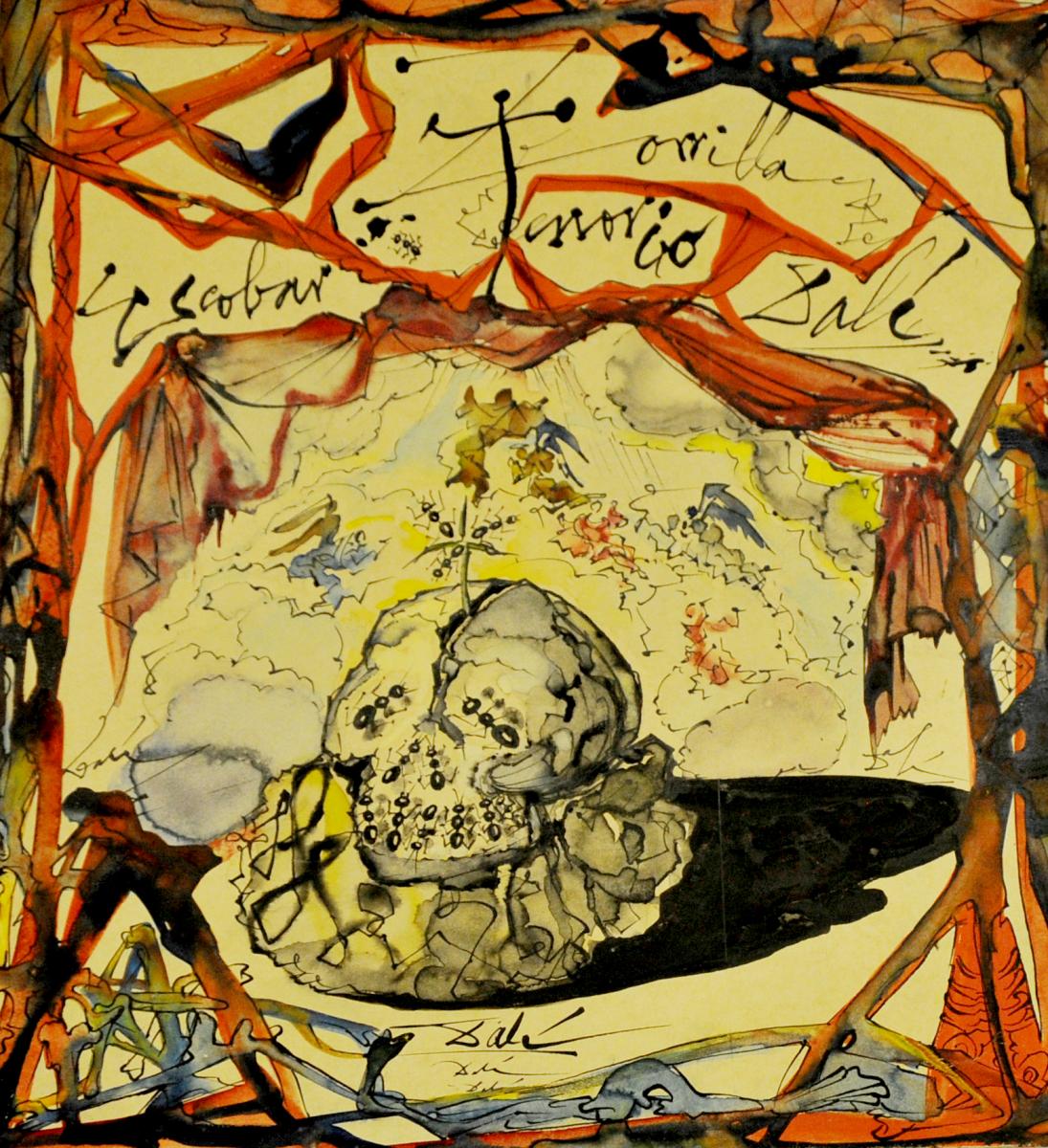A Surreal Crime Spree

Most famous pieces of stolen art are stolen because they’re famous. But the picture above — a 1949 painting by the Spanish Surrealist Salvador Dali — is famous because it was stolen. Really, that’s how Wikipedia describes it: “It is perhaps best known for its theft and return.”
Titled “Cartel de Don Juan Tenorio,” the work is — as you probably already guessed — not one of Dali’s most well known pieces. His own Wikipedia entry lists dozens of “selected” works ranging from the immediately-recognizable “Persistence of Memory” to the similarly recognizable (but for very different reasons) Chupa Chups logo. But “Cartel de Don Juan Tenorio” isn’t one of the selected works. It’s just one of the other 1,500 or so pieces created by the prolific artist over his decades-long career.
Nevertheless, “Cartel de Don Juan Tenorio” is a Dali and, regardless of its independent fame, will attract both viewers and potential buyers. In June of 2012, an upstart art gallery on Manhattan’s Upper East Side had the 11” by 14” drawing on display — until a security guard inexplicably failed to do his job, at least. During regular gallery hours, a visitor walked in with a shopping bag, strolled over to the Dali, took it off the wall, put it in his bag, and left.
The gallery’s owner, Adam Lindemann, was befuddled, for two reasons. First, as he told the New York Times, “there was a security guard standing right there. So how you don’t see a young, sweaty guy with a shopping bag I don’t understand.” But more importantly, Lindemann asked the Times, rhetorically, “What do you do with a stolen drawing by Dalí?” After all, there isn’t a very large market for the non-selected works of Salvador Dali, and those who would be interested in paying a meaningful amount for the artwork (which the gallery valued at $150,000) would also know that it was stolen. What you have on your hands is a very expensive, impossible-to-move item.
The thief, apparently, agreed, because a week or so later, he mailed it back. The painting was undamaged but the thief either kept the frame or, to save return shipping costs, removed it and threw it out. To hide his identity, the thief used a fake return address, of course. That helped for a bit, but not for very long. Even though his theft turned into a something more akin to an unauthorized loan, it was still certainly illegal — and the case remained open.
And eventually, a suspect was charged with the crime. Police were able to find his fingerprints on the returned Dali — perhaps he should have just kept it? — and in February of 2013, found a match. According to the BBC, around the same time he temporarily stole the Dali, he was caught trying to steal something else — a juice bottle from a supermarket. As a result, his fingerprints, associated with his identity, entered the crime database. Apparently, it’s easier to lift expensive art than relatively cheaper groceries.
Bonus Fact: In 1965, Dali drew a three foot by four foot picture of Jesus on the cross and donated it to Rikers Island, the New York City jail. It hung in a inmate dining room until 1981, but around that time it was moved to the jail’s lobby, ostensibly to keep it safe. That plan turned out to be a bad one. In 2003, the BBC reported that the picture, valued at about $175,000, “was stolen from its usual position and replaced with a replica — despite a 24-hour guard in the lobby” (and despite the seemingly more important fact that the lobby was on a jail island). The thieves were, eventually, identified, but the artwork was destroyed in the heist.
From the Archives: Stolen Smile: The theft of the Mona Lisa.
Related: If you like Salvador Dali, you need one of these.
